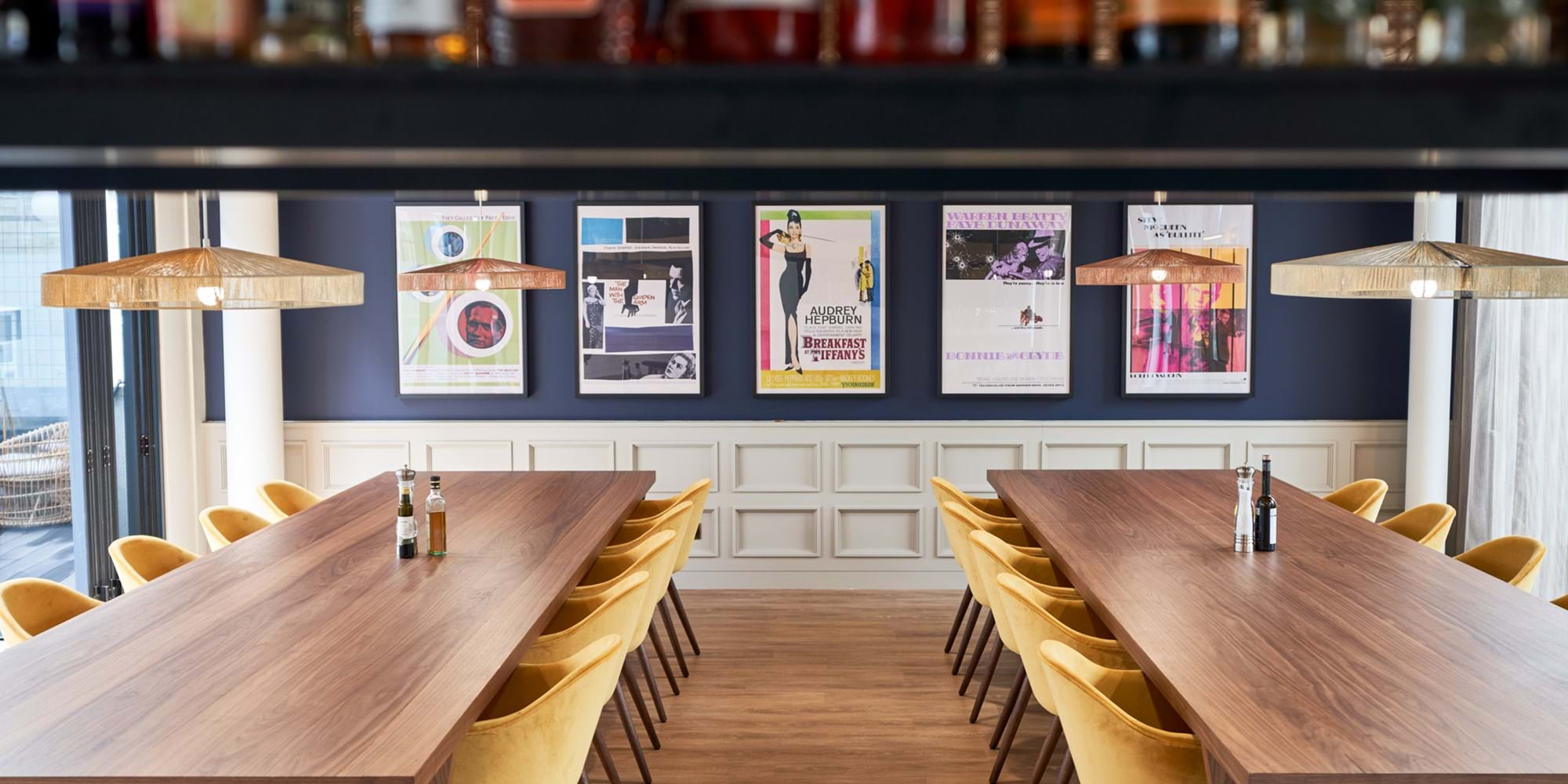Unleashing the Power of AI in Design: A Review of Midjourney and Veras
Picture a world where designers are empowered with cutting-edge tools that revolutionise their creative process. Imagine effortlessly generating tailored design inspiration imagery and material options at the touch of a button, enabling seamless iteration of design options. Well, that world is already here, thanks to readily available AI tools that promise to reshape the interior design landscape in the months to come.
At a Glance
As a design-led business, we have been on a quest to explore the possibilities offered by some of these AI marvels. Late last year we began a deep dive into the world of generative design tools, challenging their UX, the flexibility, and level of integration possible as well as the quality and speed of the output. While the technology moves faster than we can type this article, we have chosen to focus on two of the leading contenders:
Midjourney
With any of the new software, a degree of patience is required as you build a foundational understanding of how to get the most from them in the most efficient way. But patience pays off and once we got the hang of things, it moved blisteringly fast and with great results.
Here are examples of my initial attempts to create some imagery for use as inspiration imagery, using the prompt: Commercial office space with Biophilia.
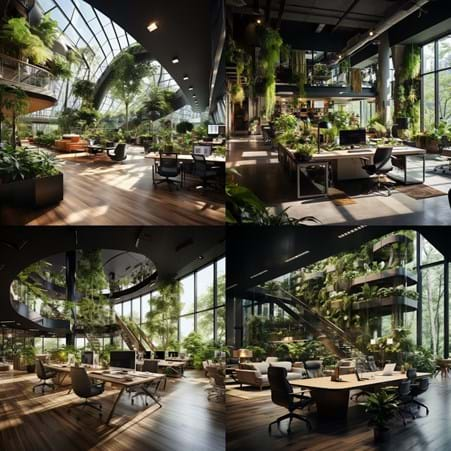
Midjourney quickly renders some incredibly fantastical interiors in a matter of seconds. It initially renders four sample images which you can then either re-roll completely, render variations of one image, or upscale a single image (if it already fits the bill). We opted to render variations of the top right image, and selected the one closest to what we wanted which produced this:
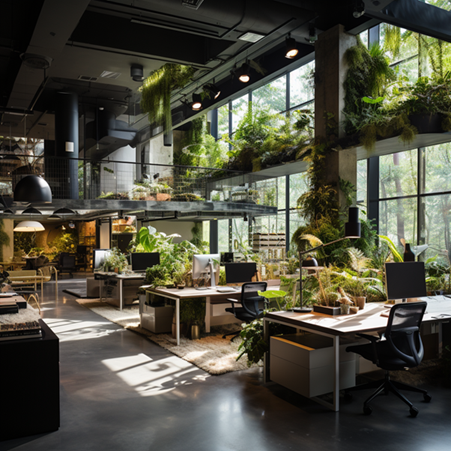
After the first round, we tested the ability of the software to adapt to changes. For example, prompting Midjourney to apply a blue floor.
Midjourney’s interpretation of the prompt was both beautiful and wildly surreal. It replaced the image entirely and created a selection of peculiar, flooded interiors and visions of urban decay; very interesting but not what we had in mind.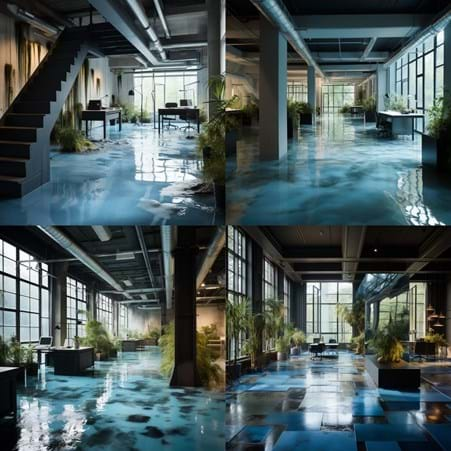
Several additional prompts were input to achieve the original desired outcome, but alas the design intent of the first image was lost with each new iteration.
Herein lies the problem with Midjourney, the image generation is based on the AI interpreting the image as a series of keywords which it then generates into a new image. It does not give a great deal of consideration to the composition of the original image. In this respect, it is a bit of a blunt tool as the opportunity to refine the image is severely lacking. You cannot expect to find an image you like and then give text prompts to adjust specific features.
After further experimentation, we finally achieved a result that best reflected the original design intent.
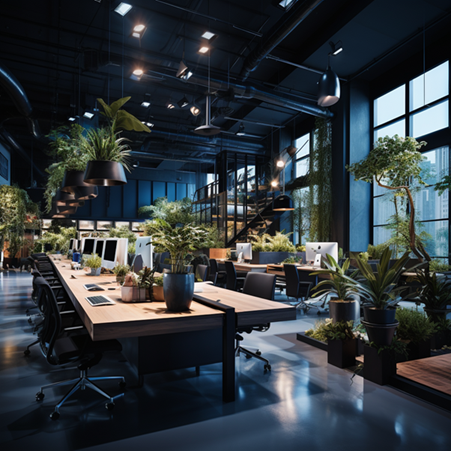
While Midjourney shines in rapid idea generation and design exploration, it has its limitations. It is best used for providing inspirational imagery that is not directly related to a particular space. Precisely controlling specific features in the output may prove challenging at times. Designers might yearn to tweak elements without disrupting the charm of the original. There is a degree of luck involved in getting the image you want. If you reroll enough times with a detailed and specific description you may hit the jackpot, but otherwise, it involves a lot of trial and error, and post-production in software like Photoshop to achieve the desired finesse.
In addition, Midjourney doesn’t generate imagery based on a specific geometry, so it cannot be used for image generation of a specific room or layout option. This is obviously a disadvantage at later stages in design development when a client wants to relate the aesthetic to their specific space, which Midjourney cannot currently do.
Nevertheless, Midjourney remains a powerful tool in our design team's arsenal, creating an additional source of idea generation at the conceptual design stage.
Veras
In the realm of 3D modelling software, Veras emerges as a distinctive and unique contender. Its premise is simple yet effective: by selecting a viewpoint within the model, Veras generates imagery that overlays the existing geometry.
Veras might not match the sleek output of Midjourney, but it stays true to the fundamental structure of the room, furniture, and joinery. This allows designers to explore a variety of looks for a space quickly, creating visually distinct outcomes while maintaining the underlying geometry. This is where it differs substantially from Midjourney, and potential could be a game-changer if the quality of the final output can improve to match the polished finish offered by rival platforms.
Here is untouched space extracted from Revit:
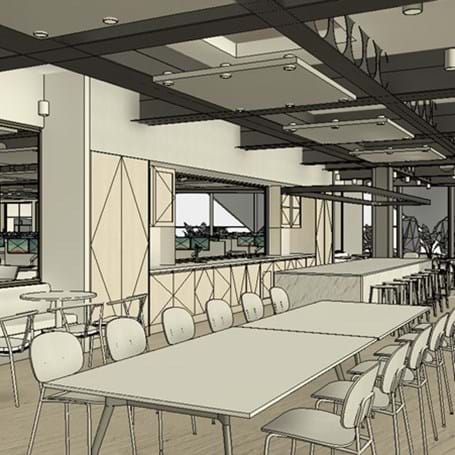
Here are three tests applying corresponding style, colour, etc.
Mid century modern
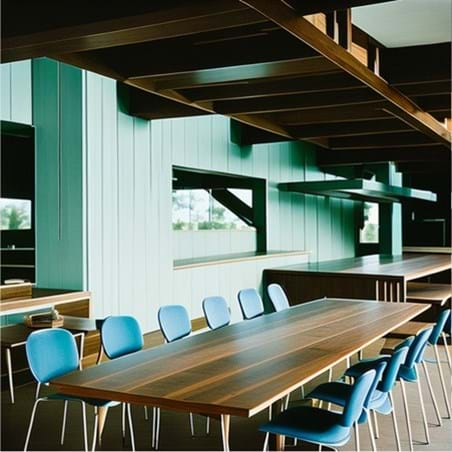
Modern clean glass and steel
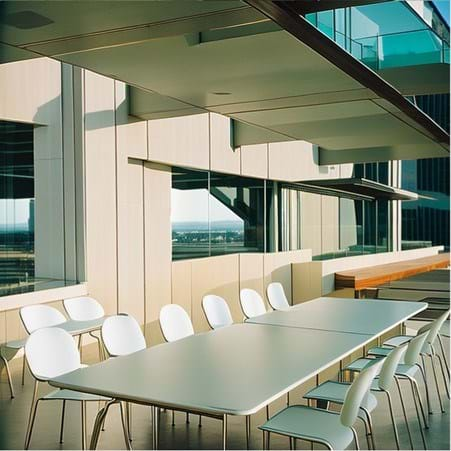
Scandi light wood
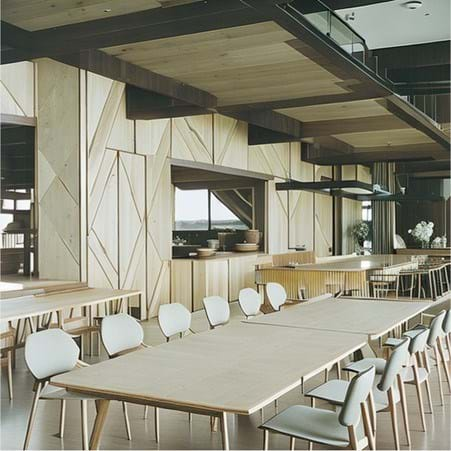
Vivid Orange
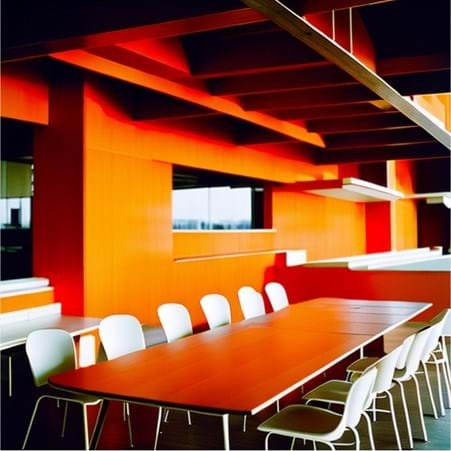
As with Midjourney, crafting effective prompts elevates Veras' performance. Ideal for early-stage design development, Veras excels in rapidly generating diverse aesthetics. However, when it comes to fine-tuning specific design details during the latter stages, traditional visualisation workflows definitely have the edge.
In Summary
Both Midjourney and Veras showcase remarkable power in expediting the design process. However, they currently fall short in providing the level of control required to deliver ‘finished’ design images. Nonetheless, their strength lies in serving as invaluable design development tools, fostering innovation and swift iteration of design options, perfect for workshopping ideas and implementing lightning speed iterations for work in progress. Over the past few months, we have been continuing to test and trial generative AI within our business with the goal of providing our clients with innovative solutions to their design challenges.
As AI continues to evolve, we can expect greater precision and refinement in these tools, potentially elevating them to new heights in the future. For now, Modus are embracing the technology and integrating it into our workflows to provide tailored solutions that meet and exceed client requirements.
If you have questions on how AI and generative design tools could elevate your upcoming project, get in touch with our team today.
